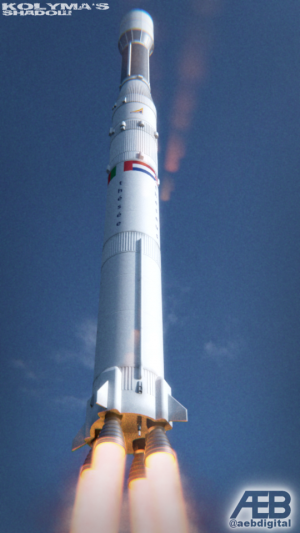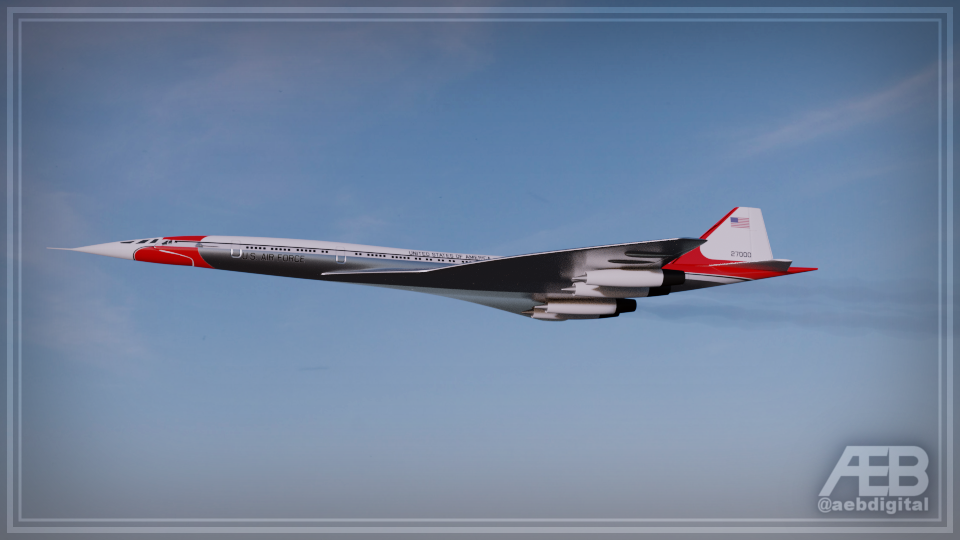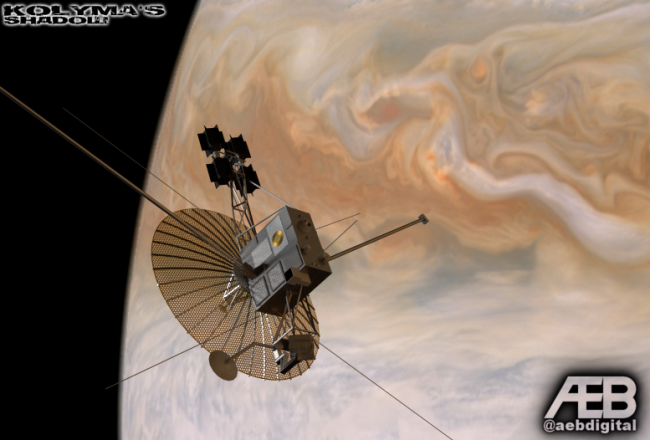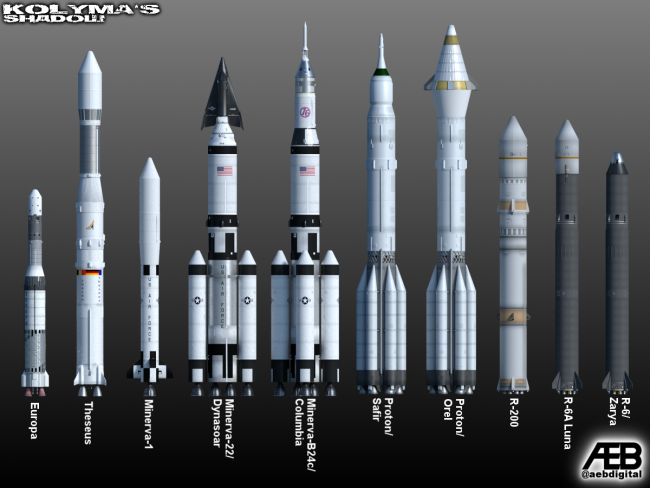I think I might need to reread those more slowly; it was a whole mishmash of numerous proposals, many of which did seem to address specific issues I had with the MAKS-like proposal.
They are interesting but keep in mind they tended to gloss-over a lot as well
Frankly the other cited DARPA/AF/NASA study pretty much is focused on LV's that can separate, lift themselves, (or at least greatly slow their drop rate) and perform their own powered Gamma Maneuver with top-carry the only "option" considered because of an assumption that no LV can be fitted under or in an existing AC without major modifications.
In the end the assumption of payload-to-orbit "required" drives the rest of the assumptions and I'm of the mind that far to many of the initial assumptions are shaky at best.
I haven't been back there in quite a while; I'm not sure I can remember or recover my password, or even log-in name!I wouldn't know where to look there for encyclopedic discussion of air-launch options; I would think I'd be most likely to find a bunch of goofy suggestions and Jim going "No" to all of them.
He's like Newhart playing Dr. Proton on Big Bang Theory.
You can't do that on AH.com, there is a minimum reply character limit. It may be amazing to hear that I've ever encountered it, but I have.
So no, of all the things I ever saw at NSF, this is not one of them.
Your screen name there is the same as here, (which is how I recognized it) but ya, I haven't been back in a good long while myself as the factionalism was getting to me.
Amazingly Air Launch and various ideas was one of the ones Jim tended to put a bit more effort into. Usually
Anyway, although I'd seen MAKS in various incarnations on the Net, I figured as I said above that the bimodal tripropellant engine that would provide high thrust early on then shift to efficient lower thrust was key to that particular design's prospects for success. Since neither that nor any other ways and means of closing the thrust/vertical velocity gap was mentioned in the original concept presented here, I simply disbelieved that the thing could fly at all.
As you can see, I am now very well past that point; put in two J-2S and it can work fine I guess. As Kelly Johnson said, put enough thrust on an ironing board and it will fly.
Yes but Kelly was also aware that you can easily "fly" something into the ground even with "enough" thrust
Part and parcel of the concept is some way to get the LV from horizontal to a more vertical orientation and HOW you do that with no real "lift" on the LV is a key question. (IIRC MAKS had to have the carrier AC go into a virtual stall to launch didn't it?)
The question now is, is it a good way of putting 12 tons (about three or more of which are the launch engines, henceforth useless to the mission) into orbit? Do the special advantages of air launch compensate for drawbacks?
That's a completely different discussion, one that might well be left to the author to unfold. Hitherto in this TL there has been a lot of blundering about; the Air Force may well be once again, as with DynaSoar, seducing themselves into a less than optimal option because this one happens to have wings and require pilots.
Hey there!
In an earlier edition of reply, weeks ago when the thing first came out, I wondered why Minerva was considered so very expensive for instance. That was one program that did seem "smart" to me compared to OTL. I didn't like its upper limits, but really nearly 30 ton payloads to low orbit is not a lot less than the most we Americans have had available since we launched the last Saturn V to put up Skylab; the standard Minerva range very comfortably exceeds the useful payloads of the Shuttle OTL. Given that almost 30 tons is enough to accomplish anything within reason with enough launches and patience, I figured that the economics of having this one Swiss Army Knife launch system would come into play, with the Air Force, Columbia, and all US civil launches relying on the one system. I think the author then disabused us of the notion that Minerva launches are available for private sale.Even so, with the Air Force using its various sizes steadily for every government launch, I'd think economies of scale would kick in, and also that the components undergo steady economizing, with the engines being redesigned to be cheaper and lighter with lower part counts. So with assembly lines rolling, I had to wonder just how costly Minerva launches could be expected to be. Make them cheap enough and there is no reason to push for reusability.
Well, apparently either there are limits to how far that sort of economy goes, or else the boys in blue are again stricken by the obsession with a spaceship that is an airplane in the sense that you just gas it up, load in the ordinance (or other payload), hop in and go. They don't like playing artillerymen I guess. Or else the rockets do cost.
I'll point out the the USAF is no less susceptible to "logical" thinking that lacks logic than any other organization and specifically it wasn't until the mid-to-late 60s that the 'missilemen' became commanders enough to be taken seriously. A lot of both public and military thinking was dominated by the idea that "missiles" and "aircraft" were two separate systems that would "eventually" combine but were no where near that point yet. And yet there was an expectation that manned and unmanned rockets, (but mostly manned) would proceed like the previous aircraft development and race ahead to unexpected, (but obviously since we KNEW how aircraft technology went we could easily 'foresee" the developments THIS time) results in a few decades at most.
Unfortunately that early outlook took some significant hits in the 1960s that didn't allow the smooth progression "everyone" expected and unlike aircraft, commercial space development was never the same "driver" as aviation.
If they really want to worry about reusing the hardware, it seems to make more sense to me to look at ways and means of recovering the first stages and boosters, and the obvious answer there is to put wings on the core stage, perhaps then filling those wings with kerosene and adding more E-1 engines. It would probably be easier to make those ker-lox engines reusable than the J-2S. I can even see making the upper stage recoverable--if not the whole stage tankage and all, then anyway putting the J-2S engine in its own mini-spaceplane and landing it after it orbits once around the Earth, leaving the payload, whatever it is, to go on its merry way and come down if it is going to at its own later convenience, without having to haul down a launch engine it stopped needing once it reached orbit.
Now I have to admit that the all up mass of the air-launched tank/spaceplane ensemble looks impressively low as an SSTO. And if making the Minerva lower stage engines reusable is an approach to cost savings I suppose eliminating them completely will save even more.
Being honest "reusability" was seen as an early requirement but circumstances, (lack of excess margin) and the need to get something operating quickly precluded a more logical step-by-step process. Couple that with the "within-a-decade" Moon landing goal and any thoughts of reusability went out the window. This tact may alter that somewhat, but the main idea of a "single" vehicle that can perform the whole flight fits right in with the idea that what you need for "efficient" operations is a space-going-airplane as it's the 'closest' example to hand.
IMO part of the whole problem was/is "spacecraft-are-airplanes" and all the baggage that flows from that point
Offset by the cost of the launcher airplane and its maintenance of course! i share your skepticism that a standard USAF transport or tanker can simply have some latches welded on top and step into the breach;
Well, "technically"... (Can't find it at the moment but "Quicklaunch" was an LV concept for a fully "palletized" LV that would be dropped out the back of a C-5, orientated by parachutes and launched)
I think I've shown the plane does not need to do any of the daredevil maneuvers I once considered necessary to toss the rocket up, but it remains to be seen whether and how it can be ejected in a way that gives the plane the option to get out of the way in time! Probably the wisdom of dropping the rocket from the belly will be shown by experiment and even then it is a little difficult to imagine just what the airplane will do. Pull up into a steep climb just before release, then go steeper still to kill forward velocity and let the rocket drop clear down and ahead before it fires I suppose. The plane can also bank hard left or right to clear out. I do believe many standard models can do that, but of course adapting a plane to take on such a thick payload on its belly would be a major task involving very specialized long landing gear and so forth.
Depends on the assumptions involved, (as noted above) and the willingness/need to require an 'off-the-shelf' aircraft mostly. "Dropping" has more, (as far as I can tell MUCH more) going for it in terms ease of aircraft operations but your need to put the LV into a climb as soon as possible either means you find a way to "orient" it quickly or put wings on it to allow it to make an aerodynamic pitch-up. But in any case I'm of the opinion that you need to look 'outside-the-box' with options such as wider rather than bigger around LV structure such as side AND nose mounted "drop-tanks" and all that implies.
It will be interesting to see where this goes as it goes on
Randy





